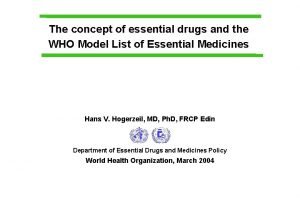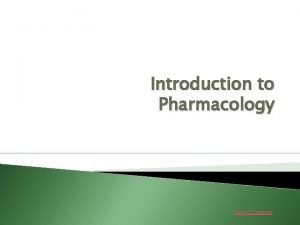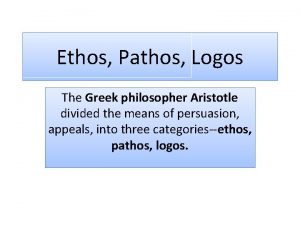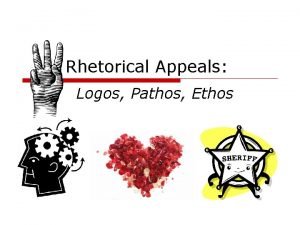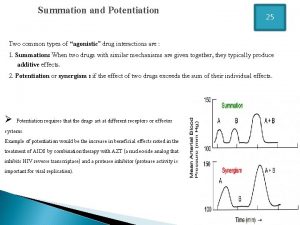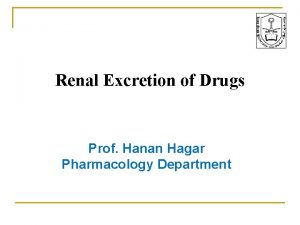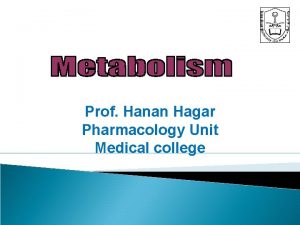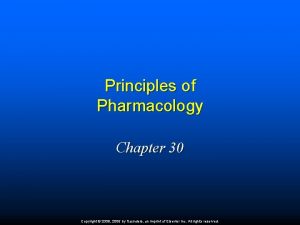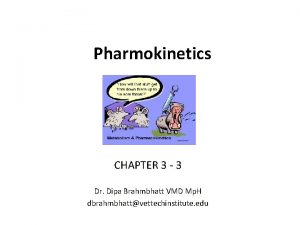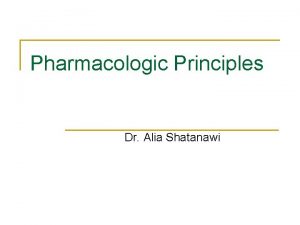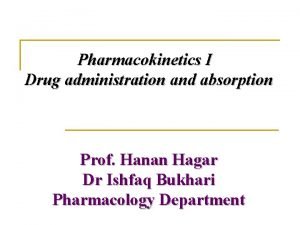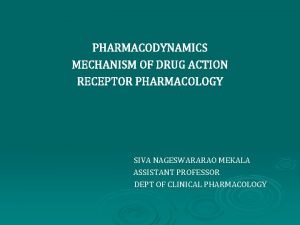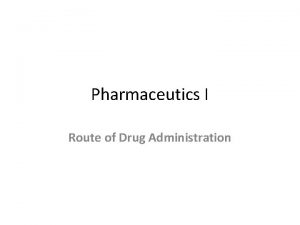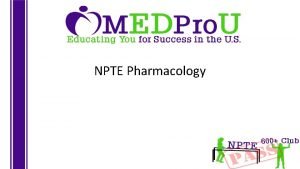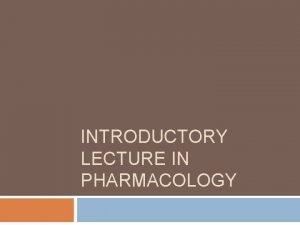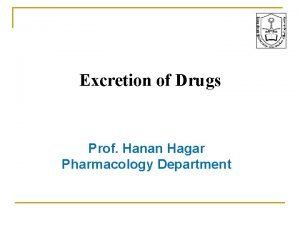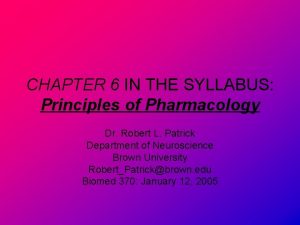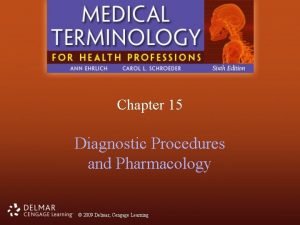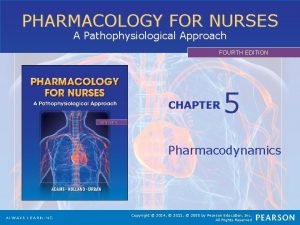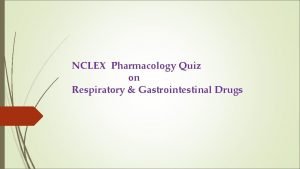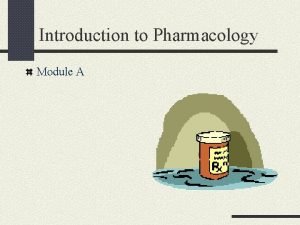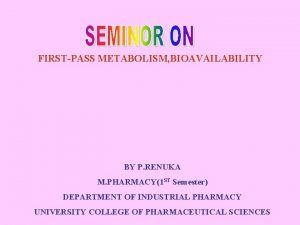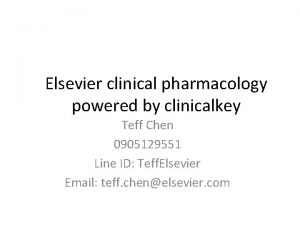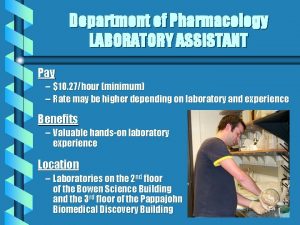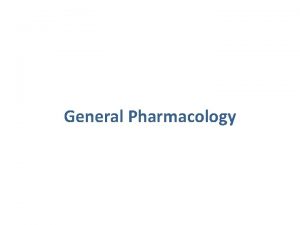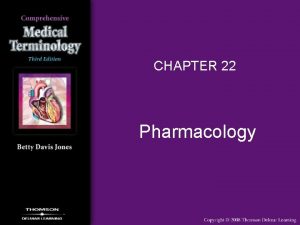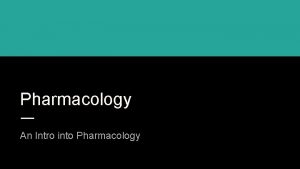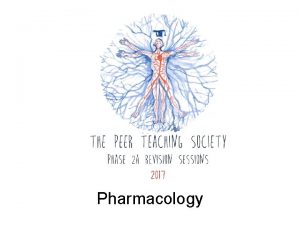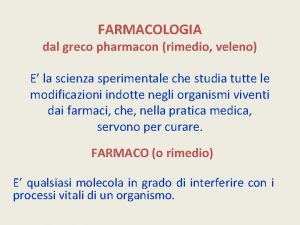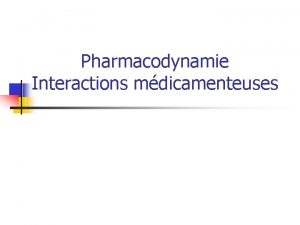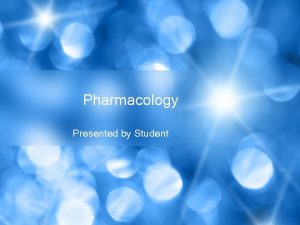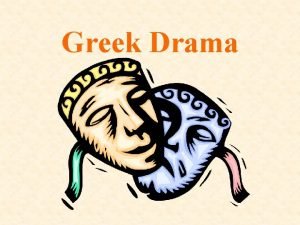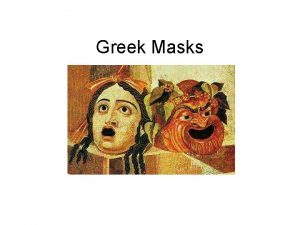INTRODUCTION TO PHARMACOLOGY PHARMACOLOGY Greek Pharmacon drug logos
































- Slides: 32

INTRODUCTION TO PHARMACOLOGY

PHARMACOLOGY (Greek “Pharmacon” – drug, “logos” teaching) The science that studies the interaction of the chemical substances with live organisms, drugs administration for treatment and prophylaxis of various diseases and pathological processes

• Pharmaceutical explosion • Nowadays there are over 350 thousand drugs in the world which are used for different diseases • In Ukraine nearly 14 thousand drugs are registered now and allowed for administration as curative agents • The volume of world pharmaceutical market annually – 400 -600 billion $ • Till 2015 – 1, 1 trillion $

Ukraine: 128 preparations of Diclofenac-sodium, 60 – Paracetamol (Acetaminophen) For each drug - only single international name and different trade names


Nadolol – international name Corgard – trade name


Paracetamol (Ukraine)

Milistan (Ukraine)

Farmacitron (Ukraine)


Becotide = Beclometh – trade name Beclomethasone dipropionate – international name

• Brand – original drug which is defended by patent and may be produced during patent term only by this pharmaceutical firm (company) • Generic – when term of patent is discontinued the drug may be produced by different pharmaceutical companies under new product (trade) names but at the basis of original active substance (similar quantity, route of administration etc. ) • All generics are much more cheaper compared to brands, that is the main reason – why they are so popular among the patients

GENERICS • UK, Deutschland, French, Holland, Denmark – the part of generics among all drugs is 50 -75 % (in Ukraine – the majority of drugs) • Market volume of generics In Europe is over 10 billion $ annually


Brand generic – the same bioavailability speed and level of absorption of active substance after administration in equal doses under the same conditions

Bioavailability of drugs complex of pharmacokinetic processes that maintenances active concentration of drug in the area of specific receptors (part of administered drug that reaches the systemic circulation and effects specific receptors)

Bioavailability – to study some pharmacokinetic parameters concentration Cmax AUC Area under curve Tmax time

Side effects (SE) of drugs • Take 5 th place among causes of mortality in the whole world after cardiacvascular diseases, malignant tumors, lungs diseases, traumas • Among stationary patients frequency of SE after introduction of drugs makes 2 -40 %

focomelia Talidomide (katergan)


PHARMACOKINETICS THE PART OF PHARMACOLOGY THAT CONCERNED WITH THE ABSORBTION, DISTRIBUTION, METABOLISM (BIOTRANSFORMATION) AND EXCRETION OF DRUGS WHAT THE ORGANISM DOES TO THE DRUGS

PHARMACODYNAMICS THE PART OF PHARMACOLOGY THAT CONCERNED WITH THE BIOCHEMICAL AND PHYSIOLOGICAL EFFECTS OF DRUGS AND THEIR MODE OF ACTION IT INCLUDES THE DOSE-EFFECT RELATIONSHIP, FACTORS MODIFYING DRUG EFFECTS, DOSAGE, DRUG TOXICITY WHAT DRUGS DO TO THE ORGANISM

RECEPTOR THEORY OF DRUG ACTION • • Receptors – the places where drugs bind to tissues: macromolecules, enzymes, channels, transport systems, genes Agonists: adrenalin, isadrine, morphine etc. Antagonists: atropin, anaprilin, dimedrol etc. Agonist-antagonist: labetolol ( 1, 1 -adreno-blocker, but activates 2 adrenoreceptors), pentazocin (agonist delta- and kappa-opiate receptors and mu-receptors antagonist)

Receptors – specific cell sites Opiate receptors steroid-receptor GABAc receptors Serotonine receptor

Receptors - enzymes cholinesterase Cox - Cyclooxygenase MAO ACE - angiotensin converting enzyme

Receptors – ionic channels sodium (Na+) channels Voltage-dependent potassium channels calcium channels

thyroid hormone receptor - genes


PRESYSTEMIC ELIMINATION (first pass metabolism) presystemic elimination – extraction of the drug from blood circulatory system during it’s first passage through the liver– it leads to decreasing of bioavailability (and therefore, decreasing of biological activity) of drugs propranolol (anaprilin), labetolol, aminazin, acetylsalicylic acid, labetolol, hydralasin, isadrin, cortizone, lidokain, morphin, pentazocin, organic nitrates, reserpin

PRESYSTEMIC ELIMINATION (first pass metabolism)

• ONSET – the period between the moment of drug introduction to the organism and the beginning of its action • DURATION OF DRUG ACTION – the period then specific effects of the drug are maintained • WIDENESS of therapeutic action (therapeutic window) – the distance between minimum therapeutic and minimum toxic doses of drug
 Concept of essential drugs
Concept of essential drugs Example of crude drug adulterated with exhausted drug
Example of crude drug adulterated with exhausted drug Slidetodoc
Slidetodoc Pharmacology introduction
Pharmacology introduction Ekologi berasal dari kata oikos dan logos logos berarti
Ekologi berasal dari kata oikos dan logos logos berarti Greek philosophy ethos pathos logos
Greek philosophy ethos pathos logos Ethos, pathos, logos
Ethos, pathos, logos Appeal to pathos
Appeal to pathos The greek miracle
The greek miracle Venipuncture radiologic technologist
Venipuncture radiologic technologist Summation of drugs
Summation of drugs Glomerular filtrate
Glomerular filtrate What is ion trapping in pharmacology
What is ion trapping in pharmacology Metabolism definition in pharmacology
Metabolism definition in pharmacology Chapter 30 principles of pharmacology
Chapter 30 principles of pharmacology First pass hepatic metabolism
First pass hepatic metabolism Alia drug testing
Alia drug testing First pass effect
First pass effect First pass effect
First pass effect Mechanism of drug action
Mechanism of drug action First pass effect in pharmacology
First pass effect in pharmacology Basic principles of pharmacology
Basic principles of pharmacology What is pharmacology
What is pharmacology What is ion trapping in pharmacology
What is ion trapping in pharmacology Basic principles of pharmacology
Basic principles of pharmacology Chapter 15 diagnostic procedures and pharmacology
Chapter 15 diagnostic procedures and pharmacology Pharmacology for nurses: a pathophysiological approach
Pharmacology for nurses: a pathophysiological approach Respiratory pharmacology quiz
Respiratory pharmacology quiz Pharmacology module
Pharmacology module Hepatic extraction ratio formula
Hepatic extraction ratio formula Clinical pharmacology powered by clinicalkey
Clinical pharmacology powered by clinicalkey Pharmacology of drugs acting on respiratory system
Pharmacology of drugs acting on respiratory system Pharmacology pay
Pharmacology pay
